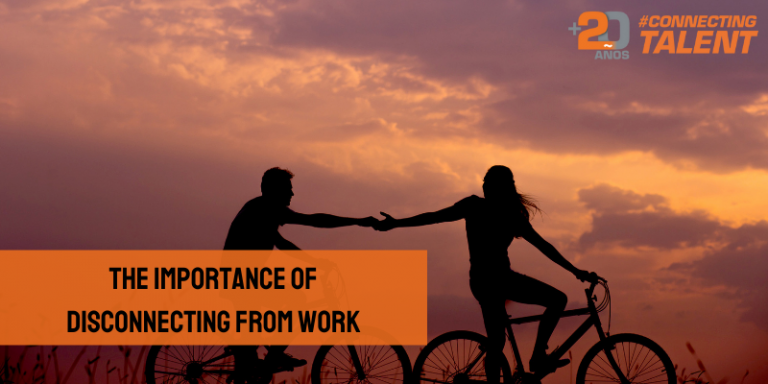In today’s hyper-connected world, maintaining a healthy work-life balance is paramount. Successfully disconnecting from work at the end of the day is crucial for preventing burnout and fostering well-being. This guide delves into the complexities of disconnection, exploring practical strategies to achieve a satisfying separation between professional and personal life.
The article will cover essential aspects, including defining disconnection, understanding common barriers, and exploring effective strategies for both proactive and reactive disengagement. Furthermore, it will examine the role of technology and the importance of a supportive environment in achieving this crucial detachment.
Defining “Disconnecting”

Disconnecting from work at the end of the day is a crucial aspect of maintaining a healthy work-life balance. It’s not simply about physically leaving the office; it’s about actively shifting from a professional mindset to a personal one. This transition requires mindful effort and understanding of the various facets involved in disconnecting.Effective detachment involves not just a cessation of work tasks but also a conscious effort to separate from work-related thoughts, emotions, and even physical sensations associated with the workday.
This nuanced approach is vital for preventing burnout and fostering well-being. Different individuals and perspectives offer varying insights into this process.
Perspectives on Disconnecting
Understanding the diverse viewpoints on disconnecting provides a comprehensive understanding of its importance. Employees often face challenges in fully separating from work due to factors such as heavy workloads, demanding clients, and the constant accessibility of technology. Employers, on the other hand, may benefit from recognizing the importance of employees’ need for downtime and detachment. This understanding can lead to better work-life balance policies and potentially enhance productivity in the long run.
Work-life balance experts emphasize the significance of creating clear boundaries between work and personal life to prevent burnout and promote overall well-being.
Stages of Disconnecting
Disconnecting is not a single event; it’s a process. Recognizing the different stages and corresponding actions can facilitate a smoother transition.
| Stage | Description | Actions | Example |
|---|---|---|---|
| Initial Disconnect | Transitioning from work mode, mentally preparing to leave work tasks behind. | Closing work-related apps, turning off notifications, putting away work materials, and making a conscious decision to transition to personal activities. | Putting away laptop, phone, and disconnecting from work email. |
| Complete Disconnect | Full detachment from work tasks. Engaging in activities that are unrelated to work. | Engaging in non-work activities, such as spending time with family, pursuing hobbies, or relaxing. | Reading a book, spending time with family, or listening to music. |
| Sustained Disconnect | Maintaining detachment throughout the evening, preventing work-related thoughts and activities from interfering with personal time. | Avoiding work-related thoughts, emails, or calls. Focusing on personal interests and activities. Engaging in relaxation techniques like meditation or deep breathing. | Engaging in hobbies, relaxation activities, or spending quality time with loved ones. |
“A key component of disconnecting is recognizing the mental and emotional toll of work and consciously choosing to disengage from it.”Dr. Sarah Miller, Work-Life Balance Expert.
Identifying Barriers to Disconnecting
Successfully disconnecting from work at the end of the day is crucial for maintaining well-being and preventing burnout. Understanding the obstacles that hinder this process is essential for developing effective strategies to achieve a healthy work-life balance. Many factors, both psychological and environmental, can contribute to this challenge.A key aspect of disconnecting is recognizing the subtle yet persistent ways work intrudes on personal time.
This often involves a complex interplay of ingrained habits, perceived obligations, and personal characteristics. Addressing these barriers is a significant step towards establishing healthier boundaries and ultimately improving overall quality of life.
Common Obstacles to Disconnecting
Several common obstacles frequently prevent individuals from fully disconnecting from work after the workday ends. These range from practical concerns to deeply rooted psychological tendencies. Identifying these obstacles is the first step toward developing effective coping mechanisms.
- Work-related pressure and expectations: Constantly feeling the need to respond to emails, messages, or calls, even outside of regular working hours, is a significant barrier to disconnecting. This pressure can stem from a variety of sources, including demanding clients, urgent projects, or a culture that encourages continuous availability. This constant pressure can create a feeling of being ‘on call’ which can lead to exhaustion and stress.
- Perfectionism and fear of missing out (FOMO): Perfectionists may struggle to let go of work tasks, fearing they might miss important details or opportunities. Similarly, FOMO can drive individuals to check in on work matters even when not required, potentially leading to feelings of guilt or inadequacy if they miss something. This desire to be informed and avoid missing something important, even if it’s not directly related to their job responsibilities, can hinder disconnecting.
- Procrastination and task avoidance: Procrastination can extend work-related thoughts and behaviors into personal time. Uncompleted tasks can lead to anxiety and a constant preoccupation with work, making disconnection difficult. A fear of starting new projects can contribute to this as well.
- People-pleasing tendencies: Individuals who prioritize pleasing others may feel obligated to respond to work-related requests even outside of scheduled hours. This desire to accommodate others can extend work into personal time, making disconnection challenging.
- Environmental factors: The physical environment can significantly impact the ability to disconnect. A home office, a workspace with no clear separation from the living space, or a noisy environment can all contribute to maintaining a continuous state of work-related alertness.
Psychological Factors Contributing to Work Stress
Psychological factors play a crucial role in perpetuating work-related stress and hindering disconnection. Recognizing these factors is essential for developing strategies to address them effectively.
- Fear of failure or inadequacy: Individuals who fear failing to meet expectations or being perceived as inadequate may experience increased stress and anxiety, making disconnection difficult. This anxiety can manifest as a constant need to monitor work progress, even outside of working hours.
- Negative self-talk and worry: Negative thoughts and worries about work can persist even after the workday ends. This can create a sense of unease and prevent individuals from fully relaxing and disconnecting.
- Stress and anxiety: High levels of stress and anxiety can make it challenging to mentally detach from work. These emotions can lead to intrusive thoughts and behaviors related to work, hindering the ability to disconnect.
Triggers for Work Thoughts and Behaviors
Identifying specific triggers can help individuals develop strategies to manage them and successfully disconnect.
- Emails and notifications: Emails, instant messages, and other notifications can act as significant triggers, pulling individuals back into the work environment. Actively managing these notifications is crucial for successful disconnection.
- Work-related phone calls: Unexpected calls can disrupt personal time and make disconnection difficult. Establishing clear communication protocols and boundaries can help mitigate this issue.
- Social media updates from colleagues: Work-related social media posts or interactions can trigger thoughts and feelings about work even outside of working hours.
- Unscheduled work tasks: Unanticipated or urgent tasks can cause individuals to feel compelled to continue working, even after leaving the workplace.
Personality Types and Disconnecting
Different personality types may experience unique challenges when disconnecting from work.
Strategies for Effective Disconnection

Successfully disconnecting from work at the end of the day is crucial for maintaining well-being and preventing burnout. This involves more than just physically leaving the office; it requires a proactive and mindful approach to transition out of work mode. Effective strategies enable a healthy separation between professional and personal life, fostering a sense of restoration and rejuvenation.Effective disconnection strategies encompass proactive measures taken before leaving work and reactive techniques employed when work-related thoughts intrude on personal time.
By understanding and implementing these strategies, individuals can significantly improve their work-life balance and overall quality of life.
Proactive Strategies for Disconnecting
Establishing clear boundaries between work and personal time is vital for successful disconnection. This involves setting specific end times for work tasks and adhering to them as consistently as possible. Creating a dedicated workspace and actively transitioning away from work-related activities, like shutting down computers or putting away work materials, helps signal the end of the workday. Pre-planning activities for the evening or weekend can help to mentally prepare for the transition.
Communicating these boundaries to colleagues and supervisors is also beneficial, allowing them to understand and respect your need for disconnection.
Reactive Strategies for Managing Work-Related Thoughts
Even with proactive measures, work-related thoughts can sometimes intrude on personal time. Developing strategies to manage these intrusions is crucial. These methods involve techniques to shift focus away from work-related concerns. Recognizing the triggers for these thoughts is a first step. If possible, addressing the root cause of these intrusions can also help.
Prioritizing tasks and addressing unfinished work before leaving the office can reduce the likelihood of these intrusions.
Techniques for Managing Work-Related Thoughts and Emotions
These techniques aim to interrupt the cycle of work-related rumination and promote emotional regulation. Mindfulness practices, such as focusing on the present moment, can help to ground you in the present and reduce intrusive thoughts. Progressive muscle relaxation techniques, involving systematic relaxation of muscle groups, can help alleviate physical tension associated with stress and anxiety. Journaling about work experiences can provide a safe space to process thoughts and emotions, allowing for catharsis and a sense of release.
Activities to Promote Disconnection
Engaging in activities that promote relaxation and rejuvenation is essential for effective disconnection. Physical activities, such as exercise, help reduce stress and improve mood. Spending time in nature, engaging in hobbies, or pursuing creative endeavors provides a welcome distraction from work-related concerns. Connecting with loved ones, engaging in meaningful conversations, and spending quality time with family can foster a sense of well-being and promote personal connection.
Activities to Avoid for Fostering Disconnection
To enhance disconnection, certain activities should be avoided. Checking work emails or messages after hours should be avoided to prevent a sense of continuous work engagement. Engaging in work-related discussions or taking on new work tasks after hours should be minimized. Similarly, avoiding bringing work-related materials home and ensuring that your workspace is dedicated solely to work are important.
Table of Techniques to Prevent Work-Related Intrusions
| Technique | Description | Example |
|---|---|---|
| Mindfulness Meditation | Focusing on the present moment, often through deep breathing exercises. | Focusing on the sensations of your breath as you inhale and exhale. |
| Progressive Muscle Relaxation | Releasing tension in the body by systematically tensing and relaxing different muscle groups. | Tightening and releasing the muscles in your hands, arms, and shoulders, one at a time. |
| Journaling | Recording thoughts and feelings, often in a structured or unstructured format. | Writing down thoughts and feelings about a challenging work situation. |
Technology’s Role in Disconnecting

Technology has profoundly intertwined itself with our work lives, blurring the lines between professional and personal time. While offering numerous advantages, its pervasive presence can significantly hinder the ability to disconnect effectively. This necessitates a proactive approach to manage technology use, establishing clear boundaries and creating a structured environment for genuine disconnection.The constant accessibility afforded by smartphones, laptops, and email systems can lead to an expectation of constant availability, often leading to prolonged work hours and hindering mental well-being.
Proactively managing technology use is key to reclaiming control over your time and preventing burnout.
Managing Technology Use for Disconnection
Effective disconnection requires a conscious effort to limit technology’s influence. A critical aspect of this involves setting clear boundaries regarding when and how technology is used. This proactive approach helps create a healthier work-life balance.
Adjusting Digital Settings for Disconnection
Adjusting digital settings plays a vital role in facilitating disconnection. Simple yet impactful changes can significantly improve the ability to transition from work mode to personal time.
- Turning off notifications: Disable or significantly reduce notifications for work-related apps and email. This prevents interruptions during personal time and promotes a sense of detachment from work-related stimuli.
- Scheduling dedicated “tech-free” periods: Designate specific periods during the day or evenings where technology is entirely off-limits. This intentional break fosters mental restoration and allows the mind to fully transition away from work.
- Using dedicated workspaces: Establishing a physical space solely for work activities can signal a clear transition between work and personal time. This physical separation can aid in the mental separation process.
Setting Boundaries Around Email and Instant Messaging
Defining boundaries for email and instant messaging use is essential for effective disconnection. This involves establishing specific times for checking and responding to work-related communications.
- Designated email check-in times: Limit checking work emails to a few specific times during the day. This proactive strategy helps maintain control over the flow of work-related information and prevents constant interruptions.
- Out-of-office replies: Utilizing out-of-office replies, especially for periods of extended absence, clearly communicates your availability and expectations. This helps manage expectations and prevent unnecessary interruptions.
- Turning off instant messaging notifications: Disable notifications for instant messaging platforms during non-work hours. This prevents impulsive responses and allows for a more focused personal time.
Comparing Approaches to Managing Work Emails and Notifications
Various approaches exist for managing work emails and notifications. The most effective strategy often depends on individual preferences and work styles.
| Approach | Description | Benefits |
|---|---|---|
| Batch processing: | Checking and responding to emails in batches during specific periods. | Reduces the constant flow of interruptions, improving focus and reducing stress. |
| Email filtering: | Utilizing email filters to categorize and prioritize emails, allowing for targeted responses. | Improves efficiency by directing emails to the most relevant categories. |
| “Do Not Disturb” mode: | Activating “Do Not Disturb” mode on devices during non-work hours. | Significantly reduces interruptions, allowing for focused personal time. |
Turning Off Notifications and Configuring Devices for Disconnection
Turning off notifications and configuring devices for disconnection is crucial for a successful work-life balance. This requires proactive steps to minimize work-related distractions during personal time.
- Scheduling specific “off-time” periods: Establish dedicated periods throughout the day or week where all work-related notifications are silenced. This allows for focused personal time.
- Using “focus mode” or “do not disturb” settings: Utilize built-in features on smartphones and computers to silence notifications during specific periods. These features can be a valuable tool for effective disconnection.
- Turning off work-related apps on personal devices: Minimizing the presence of work-related applications on personal devices can help reduce the temptation to check work communications during personal time.
Creating a Supportive Environment

A supportive environment plays a crucial role in enabling individuals to disconnect effectively from work. This encompasses not only personal routines but also the influence of colleagues, superiors, and broader support systems. A well-structured environment reduces stress and promotes a healthier work-life balance, ultimately improving productivity and overall well-being.A supportive environment acknowledges the importance of disconnecting and doesn’t view it as a sign of weakness or lack of dedication.
It recognizes that dedicated professionals need time to recharge and return to work refreshed and focused. This supportive environment can be fostered through proactive measures that address individual needs and promote a culture of healthy boundaries.
Personal Routine for Disconnection
Establishing a consistent personal routine is key to fostering disconnection. This routine should include dedicated time slots for activities outside of work, ensuring uninterrupted relaxation and rejuvenation. It can involve a range of activities, such as exercise, hobbies, spending time with loved ones, or pursuing personal interests. A well-defined routine helps create a clear separation between work and personal life, facilitating the mental switch-off needed for effective disconnection.
Setting Boundaries with Colleagues and Superiors
Clear communication of boundaries is essential for establishing a supportive environment. Setting boundaries with colleagues and superiors is about establishing limits on the extent of work-related contact outside of regular working hours. These boundaries help to prevent work from encroaching on personal time and ensure that individuals can truly disconnect.
- Communicate your availability clearly: Establish clear communication protocols with colleagues and superiors regarding your availability outside of standard work hours. This might include specific days or times when you are not reachable for work-related matters.
- Avoid over-commitment: Be mindful of over-committing to tasks or projects, particularly outside of typical working hours. Prioritize and manage your workload to prevent feeling overwhelmed and unable to disconnect.
- Decline requests outside of your agreed-upon boundaries: Politely but firmly decline requests for work outside of your scheduled work hours. This is a critical aspect of maintaining healthy boundaries and preventing work-related stress.
Effective Communication with Team and Supervisor
Effective communication with your team and supervisor is paramount to establishing clear boundaries. Open and honest communication about work-life balance expectations is crucial.
- Discuss expectations: Schedule a meeting with your supervisor to discuss expectations regarding work-life balance and your need for clear boundaries. Artikel your personal routine and preferred methods of communication.
- Artikel your working hours and availability: Clearly define your working hours and times when you are unavailable for work-related communication. This will help colleagues and superiors understand your boundaries.
- Establish clear communication channels: Agree on appropriate communication channels for different situations. For example, define whether emails, instant messaging, or phone calls are acceptable during non-working hours, and when a response is expected.
Building a Support System
Building a strong support system is vital for effective disconnection. This system can provide emotional support, understanding, and encouragement during challenging times. This could include family, friends, mentors, or even colleagues who understand the importance of work-life balance.
- Identify trusted individuals: Identify individuals who can offer support and understanding regarding work-life balance. These individuals can provide a safe space for discussion and emotional support.
- Seek guidance from mentors or advisors: Mentors or advisors can offer valuable insights and support as you navigate work-life balance challenges. Their experience can provide guidance and perspective.
- Utilize available resources: Explore resources within your organization or community that offer support for work-life balance. These could include workshops, seminars, or online communities.
Conclusion

Ultimately, disconnecting from work at the end of the day is not just about avoiding work tasks; it’s about reclaiming your time, energy, and mental space. By implementing the strategies Artikeld in this guide, you can cultivate a healthier work-life balance, improve your overall well-being, and create a more fulfilling personal life.
This guide provides actionable steps and insights for achieving a smooth transition from work mode to personal time. By understanding the stages of disconnection, recognizing potential barriers, and implementing effective strategies, you can effectively detach from work and prioritize your personal life.